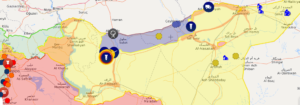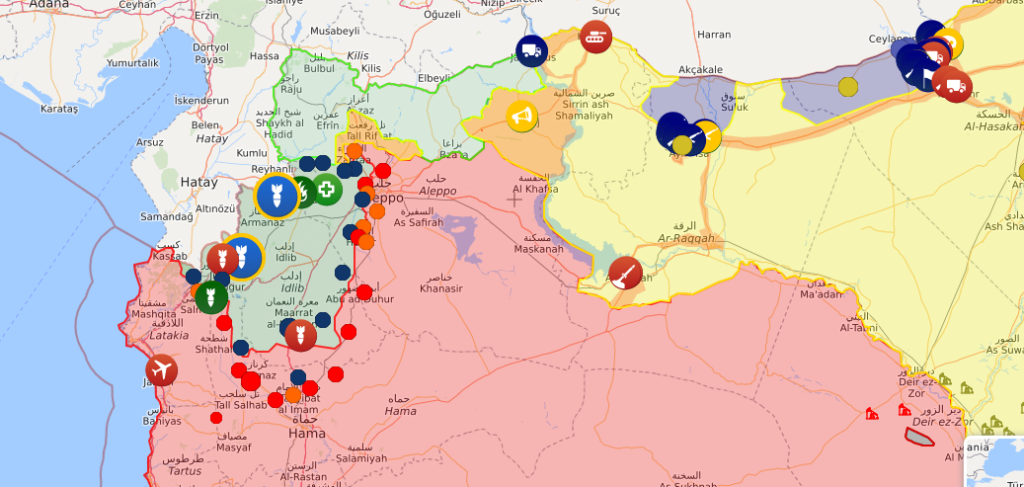Evidently the Marine Corps is going to shed all its tank units over the next decade.
In the next decade, the Marine Corps will no longer operate tanks or have law enforcement battalions. It will also have three fewer infantry units and will shed about 7% of its overall force as the service prepares for a potential face-off with China.
The Marine Corps is cutting all military occupational specialties associated with tank battalions, law enforcement units and bridging companies, the service announced Monday. It’s also reducing its number of infantry battalions from 24 to 21 and cutting tiltrotor, attack and heavy-lift aviation squadrons.
The changes are the result of a sweeping months-long review and war-gaming experiments that laid out the force the service will need by 2030. Commandant Gen. David Berger directed the review, which he has called his No. 1 priority as the service’s top general.
“Developing a force that incorporates emerging technologies and a significant change to force structure within our current resource constraints will require the Marine Corps to become smaller and remove legacy capabilities,” a news release announcing the changes states.
By 2030, the Marine Corps will drop down to an end strength of 170,000 personnel. That’s about 16,000 fewer leathernecks than it has today.
In a certain way it makes sense, as the Marine Corps is a branch of the Navy and focused on amphibious operations, and you can’t fit a lot of M1A2 Abrams tanks on a Wasp class amphibious assault ship. On the other hand, the Marine 1st Tank Battalion predates Pearl Harbor. That’s a lot of tradition to leave behind.
The decision to de-emphasize rotor craft (presumably both helicopters and the V-22 Osprey) is also interesting, especially since the Marines are the only users of the new AH-1Z Viper.
“The future Fleet Marine Force requires a transformation from a legacy force to a modernized force with new organic capabilities,” it adds. “The FMF in 2030 will allow the Navy and Marine Corps to restore the strategic initiative and to define the future of maritime conflict by capitalizing on new capabilities to deter conflict and dominate inside the enemy’s weapon engagement zone.”
Existing infantry units are going to get smaller and lighter, according to the plan, “to support naval expeditionary warfare, and built to facilitate distributed and Expeditionary Advanced Base Operations.”
The Marine Corps will also create three littoral regiments that are organized, trained and equipped to handle sea denial and control missions. The news release describes the new units as a “Pacific posture.” Marine expeditionary units, which deploy on Navy ships, will augment those new regiments, the release adds.
In addition to more unmanned systems and long-range fire capabilities, the Marine Corps also wants a new light amphibious warship and will invest in signature management, electronic warfare and other systems that will allow Marines to operate from “minimally developed locations.”
Berger has called China’s buildup in the South China Sea and Asia-Pacific region a game changer for the Navy and Marine Corps. He has pushed for closer integration between the sea services, as the fight shifts away from insurgent groups in the Middle East and to new threats at sea.
Part of the reason for Marines getting rid of tank sis their increasing vulnerability to precision weapons systems:
Tanks and armored vehicles have had trouble surviving against the threat of precision strike and the plethora of drone and reconnaissance systems flooding conflict zones across the Middle East.
For recent evidence, a Turkish launched operation targeting Syrian regime army troops in late February decimated more than a hundred tanks and armored vehicles, dozens of artillery pieces and hundreds of Syrian forces, according to the Turkish National Ministry of Defense.
Turkey posted videos highlighting a mixed role of drones, Paladin artillery systems and aircraft pounding Syrian armor from the skies over the course of several days. The Syrian army appeared helpless to defend from the onslaught of long range systems. Even tanks camouflaged by buildings and bushes were no match for sensors and thermal imaging watching from the skies.
The problem is exacerbated by the number of sophisticated anti-tank systems flooding counterinsurgency conflicts across the globe and access to long range drones once only in control by state actors are now being operated by militia groups.
In Libya, the Libyan National Army has the upper hand in its drone war with the UN-backed Tripoli government. It’s equipped with an alleged UAE-supplied Chinese drone known as the Wing Long II that boasts a 2,000 km range through a satellite link and is reportedly armed with Chinese manufactured Blue Arrow 7 precision strike air-to-surface missiles.
So it once again gets back to China.
In a way it’s heartening that the U.S. military is preparing to fight the next war rather than remain stuck in the paradigms of the last one. But history shows that the next war has way of popping up where we didn’t expect it. U.S. and Soviet armor never faced off in the Fulda Gap, and in 1989, no one was expecting U.S. forces to be fighting in Iraq.
We still have the best military in the world, I just hope we retain the tactical and strategic flexibility to meet all the challenges of the 21st century.

